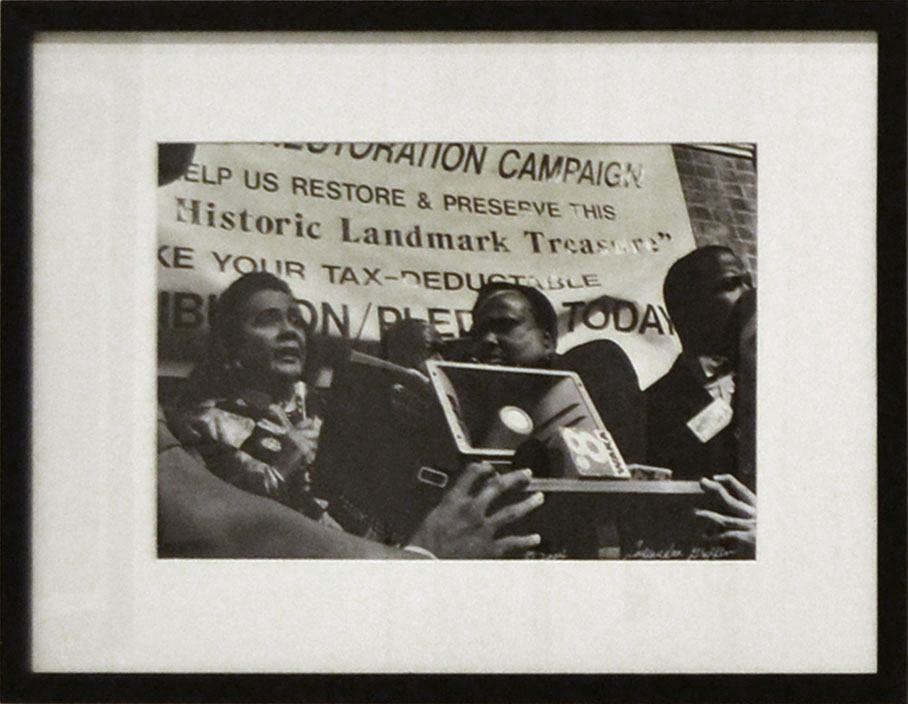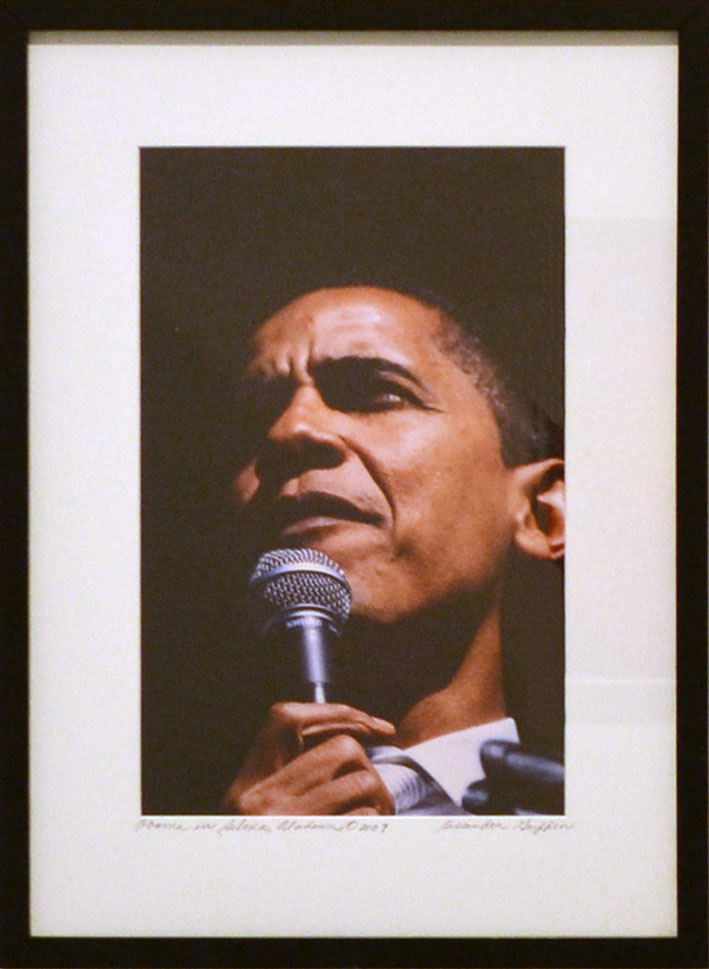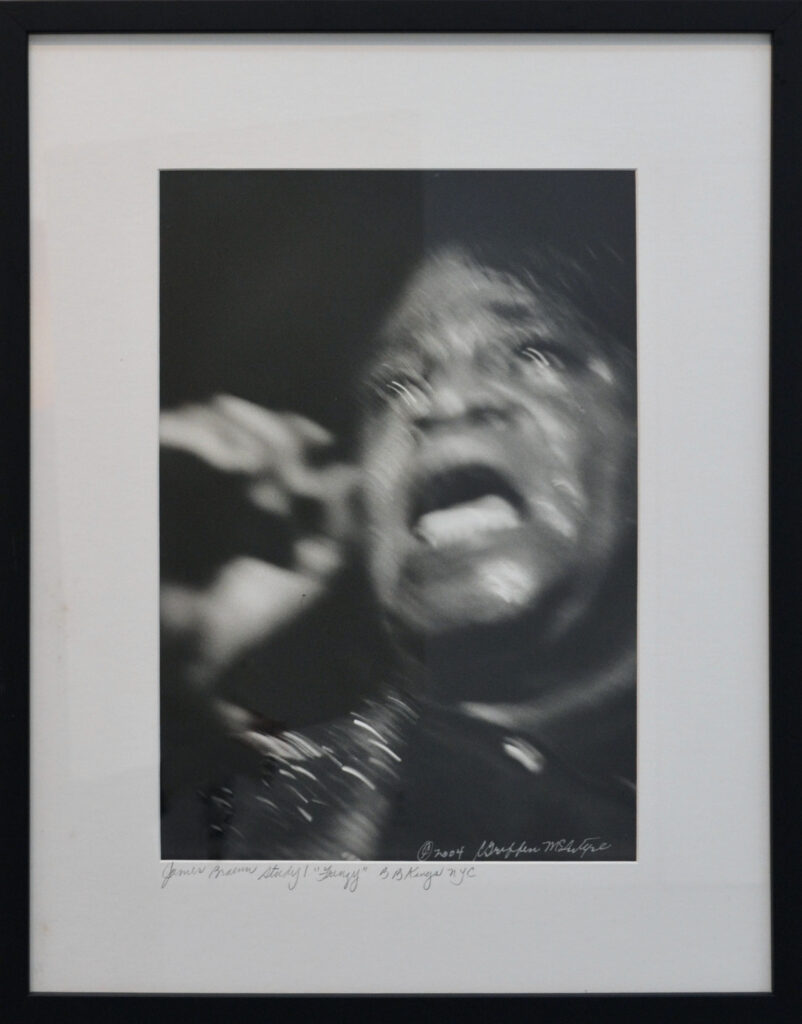Relevance, 35th Anniversary Exhibition II
“I AM A HELPER OF HUMONKIND AND A PROTECTOR OF HER/IS RIGHTS”
I arrived in New York City in 1970, a young wife and mother with hopes of escaping the clutches of segregation in the south. Born to Charles and Bertha Griffen, second oldest of eight children was an experience. I was given my first camera at the age of 11 and began to photograph family, friends and events of the 50’s and 60’s as a hobby but it was my dad’s World War II Navy veteran stories that sparked my interest in jazz history and the music itself. He told of how this all male Black American band were instructed never to look their white audiences in their faces so they played gig after gig with their heads down. It was the epitome of humiliation he recalled. Now a New Yorker, I was anxious to experience the jazz scene with hopes of seeing a desegregated approach to enjoyment of this music. Armed with my Pentax K1000, I began my journey into the jazz world photographing musicians and examining the impact of this music on bridging the gap between blacks and whites. During this period, I met and talked with Fat Head Newman, Pharoe Sanders, Ahmad Jamal, Nina Simone, Abby Lincoln, Max Roach, Jimmie Cobb, Nancy Wilson, Stanley Turrentine, Billie Taylor, Freddy Hubbard and many others, all who participated, on some level, in the civil rights movement.
Dr. Martin Luther King called jazz “America’s triumphant music.” There is a largely untold story of the key role of jazz in helping shape and quicken the arrival of the civil – rights movement.
While much of my photo-images feature portraits and special history making events, I am most drawn to the animation and mystery of musicians. I photography them as they transcend into another world where just them and the music exist.
Birmingham, Alabama has given me and my camera an in-depth look at blues and the blues musician. The lyrics alone tell a story of a complicated lifestyle exposing the dirty truth about life in the south and its relentless refusal to offer a quality of life to all. Meeting and following the trail of Jerry “Boogie” McCain, Sumpter, James Brown, Henry Gibson, T-Model Ford, R. L. Burnside’s family and others who play and sing the blues, opened a new horizon for me in documenting the faces of the movement. These were and are the faces of hope, despair, poverty, anger, hopelessness, and for some, a burning fervor to stop disparity now.
Photojournalism is rough, raw and often less organized and composed. It is a different form of reporting the story without interpretation of language…
Cassandra Griffen began her experience documenting moments through photography at the age of eleven. Cassandra, second in a family of eight found this challenging but great. Her parents were educators and gave each of their children an opportunity to explore what they considered creative interests. Hers was photography.
She had no formal training in photography and believes documenting family events and local school functions contributed to her development in the art form. Since then she cannot be seen without her Nikon camera.
Cassandra achieved two Master of Science degrees and used the knowledge gained to further her pursuit to protect the rights of the underserved and underrepresented. Her vast professional experiences, including serving as the Commissioner of Human Rights in a Human Rights Commission in New York, fortified her desire to produce that special image which would expose the many disparities between whites and blacks in America. Accordingly, images showing the many untrue stereotypes accepted as true for a particular group of people become a relevant tool for eliminating fear. My responsibility as an artist is to make work that engages our historical moments, and does so with a degree of rigor, integrity, skill, and finesse. I also feel that a part of my responsibility is to engage in a conversation with history as it relates to others who have used the photographic medium and process to talk about the human experience. I want to add something to that conversation, to advance it in some way. If I can do that, and bring some folks along for the ride who have been previously left out of that conversation, then I think I’ve done as much as can be asked. Photographer/educator/writer……..
Space One Eleven Involvement: CALL Artist 2014


